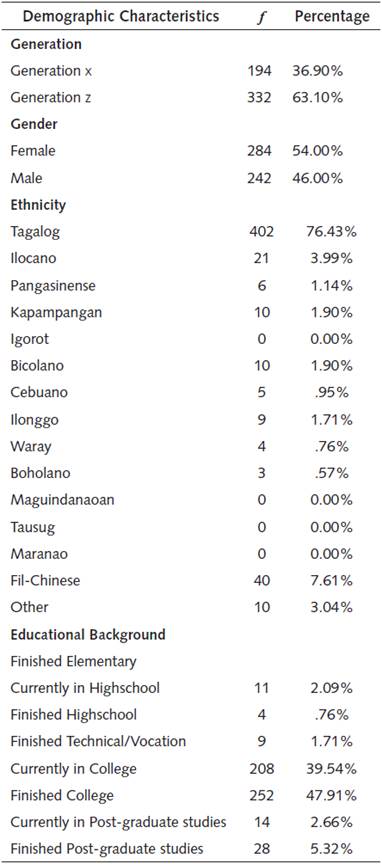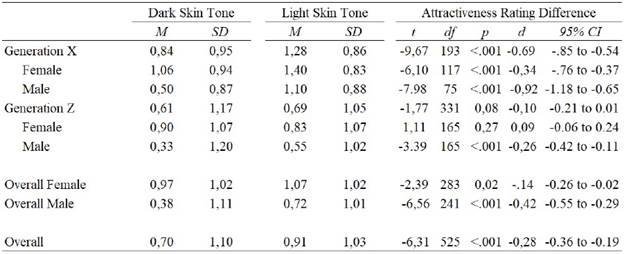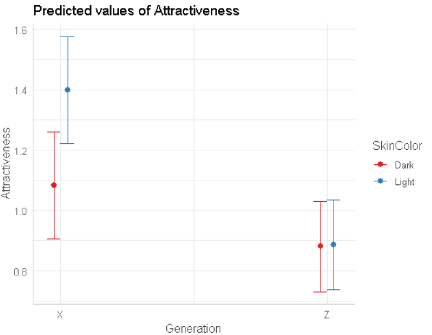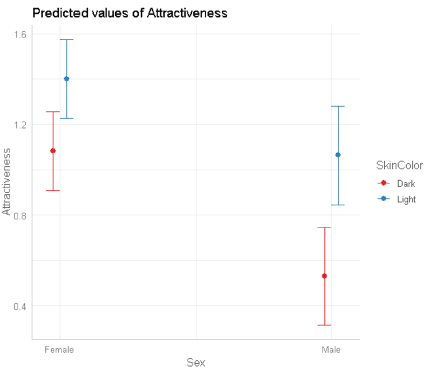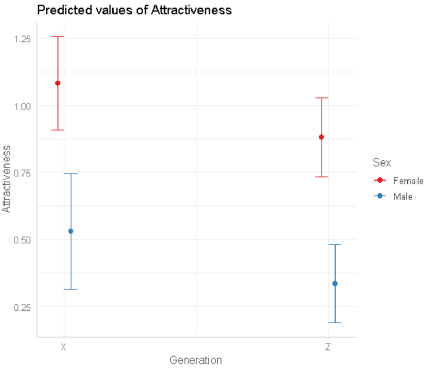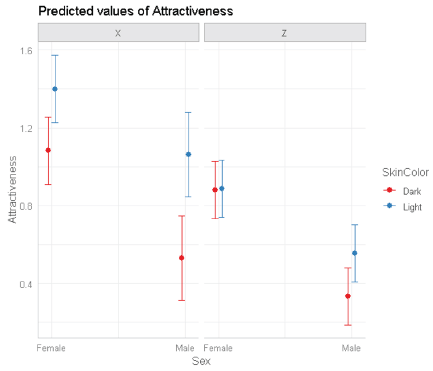Introduction
SINCE THE mid-2010s, there has been an upsurge in the content on brown skin pride among authorities of popular culture in the Philippines (Kalaw, 2017; Nopuente & Caedo, 2019; Binlot, 2019). Despite this increased attention on morena/o skin in the media, it is the same media that creates an avenue for Filipinos to have further desires for lighter skin as its content also caters to skin-whitening products and Caucasian-looking celebrities (Lasco & Hardon, 2020). Early studies on the Filipino perspectives on their skin color mention that their regard and preference for white skin is a manifestation of post-colonial internalized racism (Natividad, 2006; Rondilla, 2012; Mendoza, 2014). Looking at the greater Southeast Asian region, European colonization, historical class/ color associations, and modern globalization that perpetuates a preference for whiter skin are seen to be major factors of prevailing Asian colorism (Chen & Francis-Tan, 2021).
In former Spanish colonies, skin colors are significant markers of group membership as darker-skinned people are associated with the poor and the marginalized. As such, Puerto Ricans prefer fair-skinned people. The lighter one person's skin is, they look more attractive as it represents power (Winters, 2013). There exists stigmatization on dark skin and idealization of light skin as the latter is seen as a status value, per se -a residue of Spanish colonization (Hall, 2001). Orig (as cited by Bulloch, 2013) found that Filipinos devalue their bodies as they prized the 'white' skin of the Amerikanos over the morena Malay complexion. On one hand, the study mentioned that at the close of the Spanish colonization, darker skin was preferred by Filipinos as it represented national pride and a rejection of colonial ideas. However, 'it only to ok Filipinos a few decades to revert to white aesthetics' because of American colonization. The Americans embedded whiteness in the 'Filipino psyche' by looking into American stage and film actors as 'the new deities of modern life'. Klang and Takeuchi (as cited by La Torre, 2016) found that Filipinas felt they experienced discrimination in the United States because of their dark skin. La Torre's Filipina respondents felt ugly because of their dark skin and they were thankful that the Spanish colonized the Philippines as they thought this helped in lightening the skin tone of some Filipinos (pp. 90-93). Juxtaposing the Philippines' Spanish and American colonial history with the continued postcolonial influence of America in the sociocultural situation of the country, existing academic literature that studied the past generations saw a Filipino population that self-deprecated the color of their skin due to the consequences of foreign rule and domination.
Throughout generations, colonial thoughts played a major role in the success of the Filipino skin whitening industry (Illo, 1996; Singson, 2017). Forty-four percent of the respondents in a study commissioned by a cosmetics company found that Filipinas from ages 15-50 who use skin whitening products mentioned that they want fairer skin because it is viewed as acceptable in society (Pan, 2013). Lasco and Hardon (2020) found that changing notions of masculinity due to non-heteronormative skin whitening campaigns and improvements in the socioeconomic status factors in the increasing interest of Filipino males to consume skin whitening products. Casillan (2020) interpreted the Filipinos' consumption of skin whitening products as a form of colonial biopower on the skin of the colonized for they are said to be willing to be subjugated to such discriminatory practices. In contrast, contemporary research on mass media and race studies reveal that for Western popular culture consumers, "darker skin has instead become the hallmark of the luxurious and leisure lifestyle enjoyed only by the affluent few" (Xie & Zhang, 2013). The contrast of preference implicates that the sociocultural environment serves as the context where the complexion is perceived as a symbol of social standing in the popular culture. It is important to note in this study that there is a scarcity of contemporary peer-reviewed literature on the views of Filipinos regarding skin color.
Specifically, as of this writing, we only have the studies of Lasco and Hardon (2020) and Casillan (2020). In an effort to expand the horizons of the qualitative studies initially mentioned, this study will not only contribute to the emerging literature on Filipino skin color studies, but also provide a comprehensive understanding on the perspective of a larger number of Filipinos.
A vast literature in social psychology on skin color bias or the preference for lighter skin tones than darker ones is observed not only explicitly but also implicitly (e.g. Nosek et al., 2005; Rossen et al., 2008; Smith-McLallen et al., 2006). This skin color preference is not exclusive to issues related to racial social perception, but also to aesthetic judgment of facial attractiveness in particular (Little et al., 2011; Vera Cruz, 2018).
Decades of research have shown a consistent preference for lighter skin tone. However, a few reports suggest a shift of attitudes toward darker-skinned people (e.g. Birdsong et al., 2018). The interpretation of the findings suggests that there may be an overcompensation of explicitly self-reported attitudes in response to increasing awareness towards skin color bias related to racial discrimination. This hypothesis holds premises in two-folds. One is that the existing multicultural awareness influenced the explicit attitude towards darker-skinned people. Second is that their respondents who were college students are younger generations who have different attitudes toward darker-skinned people compared to the older generations. This finding may also be attributed to the multicultural exposure of individuals who have decreased racial or ethnic prejudice as explained by higher openness to experience (Sparkman et al., 2016). Na and Duckitt's finding among Koreans (2003) also corroborates the account that the younger generation is more open to change. They found intergenerational differences in openness to change where older generations are more conservative. Notably, older female generations have low scores in openness to change. These suggest that the increasing multicultural awareness in the current globalized society may have an influence on skin color perception.
Statement of the Problem
This paper empirically and quantitatively explored deeper the Filipinos' higher esteem for the lighter skin complexion and lower esteem for the darker one, to establish if those are determined by variations on the respondents' generation (Generation x or z) and gender (male or female), and if the mentioned variations have interaction effect between them.
Significance
This paper is significant in the sense that it takes a contemporary look at what is often assumed as a uniform and unchanging high esteem among Filipinos for the lighter skin complexion. Specifically, this paper demonstrates that high esteem has generational and gender-based differences on the part of the respondents. This paper is the first journal article to empirically and quantitatively explore the Filipinos' attitudes towards the lighter and darker skin complexions, and it aims to contribute to the literature on Filipino postcolonialism, Filipino aesthetics, Filipino psychology, and Filipino cultural studies. This study also fulfills the call of Bettache (2020) to have a cultural psychological approach to skin tone studies in the Asian context, specifically exploring the contemporary views of Filipinos that is relatively unexplored on a larger scale.
Methodology
Research Design
This paper is a quasi-experiment that aimed to examine how reported attractiveness will vary according to the manipulated skin color of a series of photographs. Instead of showing both of the conditions to the respondents, we designed 2 sets of stimuli where the fair and dark counterparts of the same photograph are separated. Exposing both conditions would make the respondent sensitive to the treatment that may alter their responses (Greenwald, 1976).
The authors used a mixed quasi-experimental design. The randomized between-subjects where the skin color conditions Dark vs. Light was tested to predict attractiveness rating. The within-subject factors sex (female or male) and generation (x or z) were included in the model, following the hypotheses. Only one set is presented to each respondent. The contents of each set are composed of 20 photographs counterbalanced with gender and skin color of the models in the photos.
Sample size estimate
The authors conducted a power analysis using G*Power to calculate the minimum target sample size. We used the t-test independent samples "A-priori" type of power analysis and the effect size was determined to be d = .29, which yielded a target sample of 502 participants for 90% power. To replicate the explicit Dark vs. Light explicit attitude difference (Nosek, Greenwald, & Banaji, 2005, p. 176) with the effect size of d = .29, the authors planned to include at least 502 participants in their sample.
Participants
Overall, the sample size was 527. After a Mahalanobis distance analysis, we determined one outlier and was removed from the total sample (n = 526). The study was performed among Metro Manila residents belonging to the age group of Generation x (1965-1980) and Generation z (1997-2012) (Nakagawa & Yellowlees, 2020). The Generation z participants were composed of 166 Males (М = 21.00, SO = 2.15) and 166 Females (M = 21.20, SO = 1.84). Generation x participants, on the other hand, were 76 Males (м = 49.70, so = 7.05) and 118 Females (М = 48.80, so = 6.94).
Instruments
The stimuli used in this study are derived from AI-generated photographs downloaded from the website thispersondoesnotexist.com. The site uses a neural network known as a generative adversarial network (or GAN) to generate algorithm-guided realistic portraits. We extracted 20 photographs of adults: 10 females and 10 males, and created dark skin-toned counterparts. The portraits selected are adults without accessories like jewelry. Each photo extracted was deliberately copied and modified to either a darker or lighter version of the same portrait. The hair and eye color were adjusted to match the skin tone for a realistic finish of the modified photos. Using open-source photoshop software, we manipulated the stimuli from normal clamp input value level before applying output mapping gamma. Actual brightness is mapped colors based on brightness levels at the top of the scale 1.00. We adjusted to .38 - .30 gamma for female and male models with dark backgrounds, and .40 - .35 gamma for female and male models with white backgrounds. We retained the original stimuli for the white skin male and female models. The darker or lighter counterparts are separated on sets A and в. The order of the stimuli in each set is randomly presented using an open-source platform for surveys and experiments, PsyToolkit (Stoet, 2010; 2017).
After providing the demographic information, the respondents proceed to the attractiveness rating task. The instruction given was, "You will be shown with a series of portraits. Your task is to rate how attractive the person in the photo may seem to you. Using a slider, moving the circle to the farthest right means that you find the person in the photo very attractive. Otherwise, you move the circle to the farthest left" On each photo, the respondents were asked to rate, "How attractive do you think is the person in the photo?" using a slider which ranged from -3 to +3 from the farthest left to the farthest right respectively.
Procedure
The authors administered the study online through convenience sampling of the target population Generations x and z. The participants were randomly assigned to sets A or в. After the informed consent form, they answer a set of demographic questions and rate the attractiveness of each portrait. The authors debriefed the respondents at the end of the data collection.
Ethical Considerations
The authors are certain that the instrument poses no psychological or moral risks on the part of the respondents. In accordance with the ethical standards of research involving human respondents, prior to their actual participation, the authors informed the respondents that they will be participating in socio-psychological research on the perception of attractiveness with the intention of publishing their findings. The respondents were assured that their answers will be anonymized and the data of the research will be kept in a secured and confidential database. The explicit consent of the respondents was secured first prior to giving them the actual instrument.
Hypotheses
The following are the hypotheses of this paper:
Light-skinned models are statistically rated as more attractive than their dark-skinned counterparts;
Light-skinned models are statistically rated as more attractive than their dark-skinned counterparts by the generation x respondents, while light-skinned models and dark-skinned models are statistically rated as equally attractive by the generation z respondents;
Light-skinned models are statistically rated as more attractive than their dark-skinned counterparts by the male respondents, while light-skinned models and dark-skinned are statistically rated as equally attractive by the female respondents; and
There is a significant interaction between the generational and gender independent variables.
Data Analysis
Data obtained using PsyToolkit (Stoet, 2010; 2017) was exported for statistical analysis. Upon data screening for outliers, we identified one multivariate outlier (p < .001) using the Mahalanobis distance test (Tabachnick & Fidell, 2007) leading to 526 cases left for analyses.
As a preliminary analysis, the demographic table is reported in Table 1, and to test whether the set assignment introduced systematic error, we conducted an independent samples t-test. The set assignment is not the target-independent variable, hence not included in the model. However, it is necessary to determine whether the experimental design did not introduce a confounding factor. It showed that being assigned to either set A or set в does not make a significant difference in their responses that might interfere in testing the hypothesis t (524) = 1.9, p = .06, d = .17, 95% CI [-.01, .34]. This means that the procedure did not result in an unintended altered response.
To address Hypothesis 1, a paired t-test between the aggregated attractiveness rating on dark and light conditions on each participant must be performed. We used a mixed design that repeatedly measured the analysis of variance (ANOVA) to test our major interaction hypotheses. On one hand, Hypothesis 2 can be inferred when there is an interaction between generation and skin tone in predicting attractiveness rating. On another hand, Hypothesis 3 can be confirmed when there is an interaction between sex and skin tone. Further analyses of planned contrast analysis using t-tests were used to examine differences in attractiveness rating according to the independent variables sex, generation, and skin tone. Lastly, Hypothesis 4 can be observed when there is a three-way interaction effect between the predictor variables sex, generation, and skin color on attractiveness rating.
Results
Demographic Profile of the Respondents
The demographic variables, as presented in Table 1, show that the majority of the respondents of this study came from Generation z and were female. In terms of income, almost a quarter of the participants had a monthly income of at least Php 190,400. Education-wise, 87.45% of the respondents were either incumbent college students or graduates.
Overall Comparison on how Models with Lighter and Darker Skin Complexions were Rated as Attractive
Mixed-design repeated measures ANOVA with two between-subjects factor (i.e., sex and generation) and one within-subjects factor (i.e. dark and light skin tone) were performed to examine the influence of the target demographic variables on attractiveness rating. As expected in hypothesis 1, skin color showed a main effect where dark skin tone is less preferred than light skin tone in general (m Dark = .70, sd Dark = 1.10; m Light = .91, sd Light = 1.03), F(1,522) = 65.03, p < .001, η2p = .11.
Generations also had a main effect where Generation z reported lower overall attractiveness rating compared to Generation x (m GenX = .1.06, sd GenX = .85; m GenZ = .65, sd GenZ = 1.04), F(1,522) = 17.4, p < .001, η2p = .03. Sex had a main effect where males reported lower attractiveness rating both on dark and light skin tones compared to females F(1,522) = 24.3, p < .001, η2p = .04.
Generational Comparison on how Models with Lighter and Darker Skin-Complexions were Rated as Attractive
There was a significant interaction between skin color and generation on attractiveness rating F(1,522) = 32.98, p < .001, η2p = .06. Consistent with hypothesis 2, generation x has a stronger preference for light skin tone compared to the younger generation. Post hoc tests revealed that Gen x and Gen z do not differ in their attractiveness rating among dark skin tones. Notably, generation z finds dark and light skin tones as equally attractive in contrast to the elder generation who finds dark skin tone less appealing. Means of dark and light skin tone attractiveness rating by generations x and z are in Table 2. The interaction plot is illustrated in Figure 1.
Gender-Based Comparison on how Models with Lighter and Darker Skin Complexions were Rated as Attractive
Consistent with hypothesis 3, skin tone and sex had an interaction effect F(1,522) = 16.44, p < .001, η2p = .03 that showed that males find dark skin tone to be much less attractive than lighter ones compared to females. A paired t-test on the attractiveness rating of dark skin tone between males and females showed that males have a stronger effect size compared to females (see Table 2). Means of dark and light skin tone attractiveness rating by females and males are in Table 2. The interaction plot is illustrated in Figure 2.
Interaction Effect between the Generational and Gender-Based Independent Variables
Both the interaction between gender and generation, and a three-way interaction between skin color, sex, and generation showed null results (ps = ns). As observed in Figure 3, males compared to females, and Generation z compared to x, consistently rated lower attractiveness on presented photos regardless of skin color rendering parallel slopes indicating absence of interaction effect. Interestingly, although the three-way interaction effect did not emerge from the data, consistent patterns of skin color preference towards lighter skin color emerged among the respondents except from the indifference found from generation z. In figure 4, a remarkable alignment is apparent between attractiveness ratings of dark and light conditions among the female generation z. Upon planned contrast analysis in paired t-tests in Table 2, generation z female subgroups, in particular, suggest that they find dark and lighter complexions equally attractive as well.
Illustrating the subgroup ratings altogether, Figures 2, 3, and 4 show that the males from both generations consistently have lower ratings relative to females. Figures 1, 3, and 4 show that generation z has lower ratings relative to their older counterparts. The graphs also show a common pattern where the lower ratings are consistently attributed to the dark complexion condition. The only times when the attractiveness ratings overlap between the dark and light conditions are in the Gen z in Figure 1 and female Gen z in Figure 3 graphs. Inferential tests support this visualization by finding statistically significant interaction effects between gender and skin color, and generation and skin color on attractiveness rating and on paired t-tests comparisons in Table 2.
Discussion
The first major finding of this paper that in general models with lighter skin complexions were rated by the respondents as more attractive than models with darker skin complexions is consistent with the literature about Filipinos' high esteem for the lighter skin complexions and low esteem for the darker skin complexion. This paper, however, is the first journal publication that empirically and quantitatively documents these Filipino attitudes.
The second major finding of this paper where generation x respondents find models with lighter skin complexions as more attractive, while generation z respondents find both lighter skin complexioned and darker skin complexioned models as equally attractive, is new to the literature about the Filipinos' high esteem for the lighter skin complexions and low esteem for the darker skin complexion. This finding brings into the picture that there is a generational difference in the way Filipinos esteem skin complexions, with the older generation sticking with the established idea that lighter skin complexion is more esteemed than the darker skin complexion and the younger generation deviating from this idea. This second major finding also runs contrary to Bettache's (2020) assertion that the younger Asian generations "may hold moral objections against colorism, yet succumb to it because of social pressure, because it is firmly encapsulated in their sociocultural worlds, wherein fair skin represents significant symbolic capital". The second major finding of this paper, however, resonates with Birdsong et al.'s (2018) findings that younger Americans have a different system of appraising skin complexions than older Americans. The difference in how this paper's generation x and z respondents esteem the lighter and darker skin complexion could be due to the fact that the generation z respondents are more exposed to contemporary global mass media and new media where multicultural ideals of beauty already proliferate.
The third major finding of this paper is that both the male and female respondents find the models with lighter skin complexions as more attractive than the models with darker skin complexions may be consistent again with the literature on Filipinos' high esteem for the lighter skin complexions and low esteem for the darker skin complexions. However, this third major finding contains a sub-finding that shows that the difference between how the male respondents rate the lighter skin complexioned and darker skin complexioned models as attractive is much bigger than the difference in how the female respondents rate the said two groups as attractive. This sub-finding suggests that skin complexion is more important to male Filipinos than to female Filipinos. This implies that there is a gender-based difference in how Filipinos esteem skin complexions. This sub-finding resonates with the assertion of Domingo (as cited by Lasco and Hardon, 2020) that having a fair complexion is not part of the idealizations of Filipino masculinity, as well as with the assertion of Rondilla and Spickard (2007) that revealed that Asian males prefer their women to have lighter skin complexions. This sub-finding also explains why the pressure to use skin whitening is more intense on the female rather than on the male Filipinos.
The fourth and last major finding of this paper that there is no interaction effect between the aforementioned generational and gender-based variables is also new in as far as the literature on the Filipinos' esteem for the lighter and darker skin complexions is concerned, as well as on parallel studies elsewhere on the globe. This major finding implies that the pattern where male respondents are more discerning in making their attractiveness ratings than the female respondents is true in both generations x and z; just as the pattern where the difference on how the male respondents rate the lighter and darker skin complexioned models is wider compared to the difference on how the female respondents rate the lighter and darker skin complexioned models also remains true in both generations. These patterns appear in the former sections that are well entrenched across the generations as explored by this study.
This study has some limitations. First, our manipulation of the photographs focused on the skin tone and did not account for the perceived ethnicity. However, the novelty in our approach is the realistic image in contrast to the virtual avatars in altering the skin color (Rossen et al., 2008) while having precise experimental manipulation. Second, the quasi-experimental design measured the attractiveness rating only once. The intergenerational differences can potentially be accounted for by the increasing openness personality trait toward early to middle adulthood as explained by personality maturation (i.e. increase in personality trait openness among others toward adulthood) that is suggested to be developmentally universal (Bleidorn et al., 2013). But the advantage of the design also suggests a robust finding by inferring causal relationship. Future research may conduct longitudinal approach to observe whether intergenerational difference persists even after accounting for the personality change across the developmental stages. Third, the self-report method is an explicit measurement of attitude. Future research may conduct both explicit and implicit procedures to test if intergenerational difference is consistently observed in the implicit measurement. It can also be used to test whether explicit report is an overcompensation to the awareness in discrimination issues (Birdsong et al., 2018) by showing weak correlation. Lastly, the sample in this study is confined in the metropolis of Metro Manila. Sampling rural areas in the future study may be conducted.
Conclusion
In this study we tested for sex and intergenerational differences and its interaction in aesthetic judgment of facial appearance. We noticed that respondents in general find the lighter skin tones more aesthetically appealing than darker ones. By deliberately modifying the facial complexion, people expressed a more negative attitude toward the darker counterpart images of non-existing models presented on different sets. When we tested for sex difference in skin color bias, males and females both expressed preference for lighter skin tones but males have stronger preference than females. When it comes to intergenerational differences, the Generation x finds lighter skin tones to be aesthetically superior compared to darker skin tones, but a subtle shift of tolerance on darker skin color is observed among the Generation z as they do not find lighter skin color superior to darker skin color, but are reported as aesthetically equal instead. Likewise, among the female Generation z subgroup, they also reported this non-distinctive aesthetic judgment between the dark and light skin color. There was neither significant interaction between gender and generation nor a three-way interaction effect found between gender, generation, and skin color conditions in predicting attractiveness rating. Future research can look into these differences as a function of multicultural awareness that promotes openness among younger generations.













